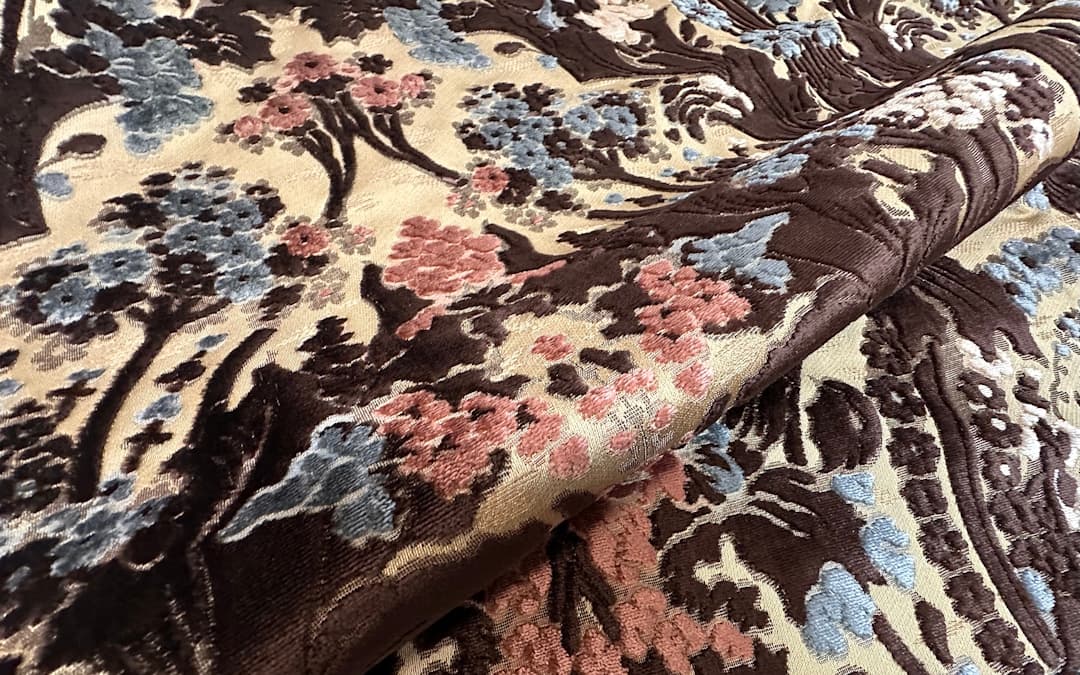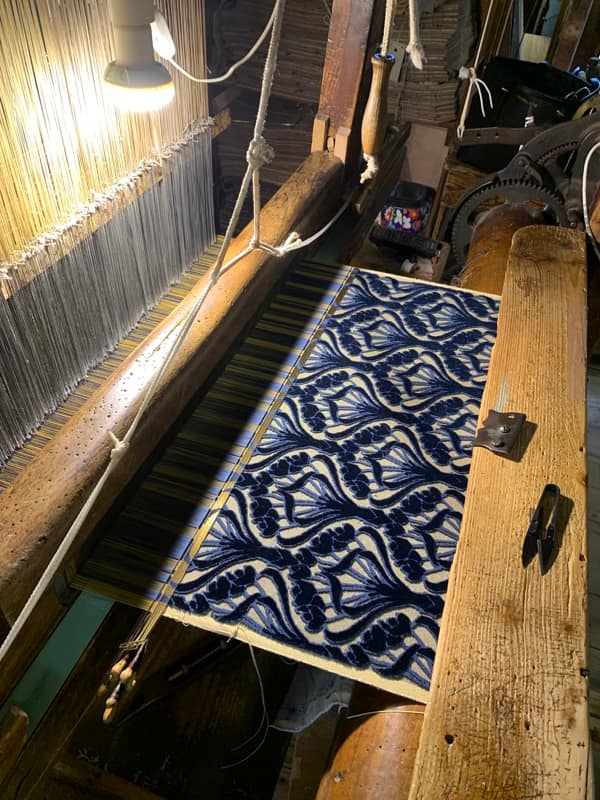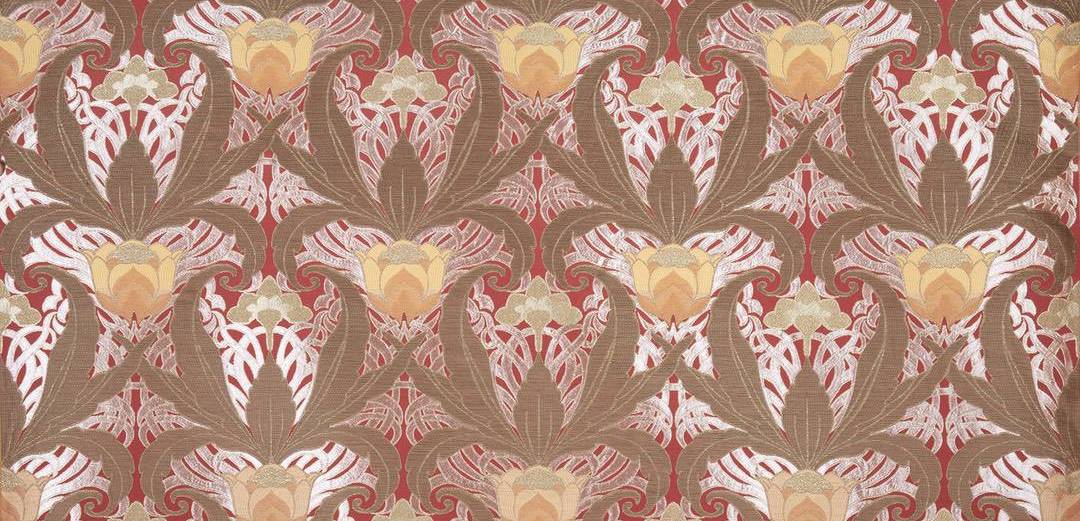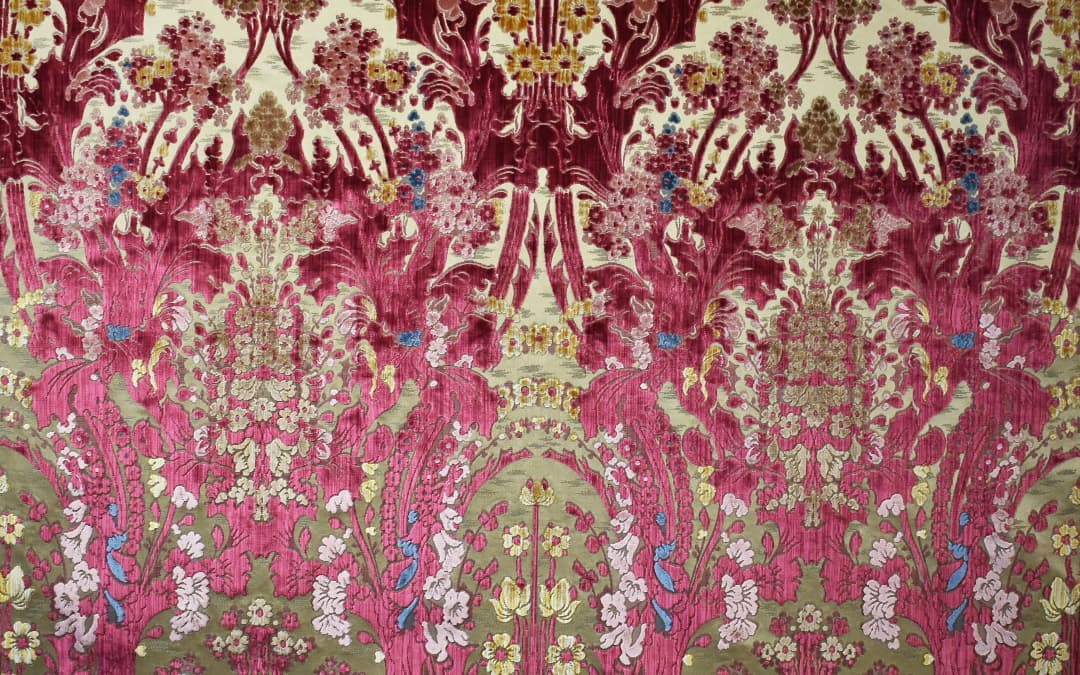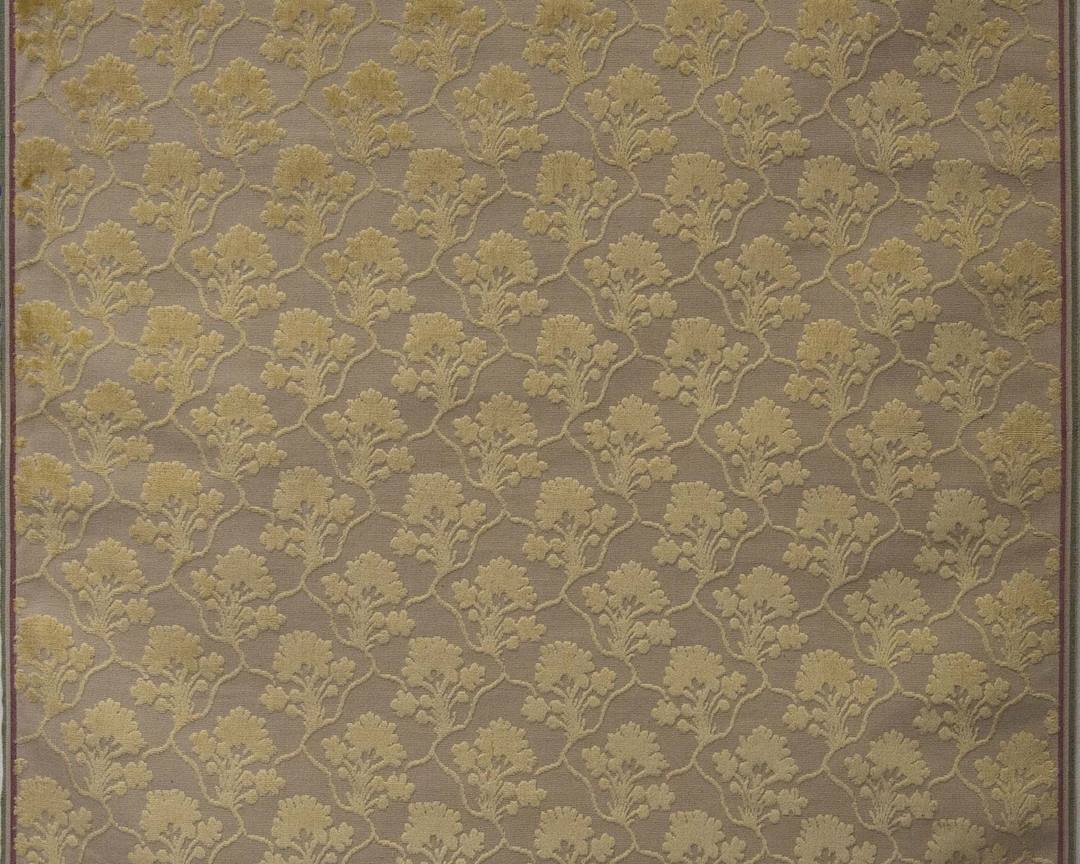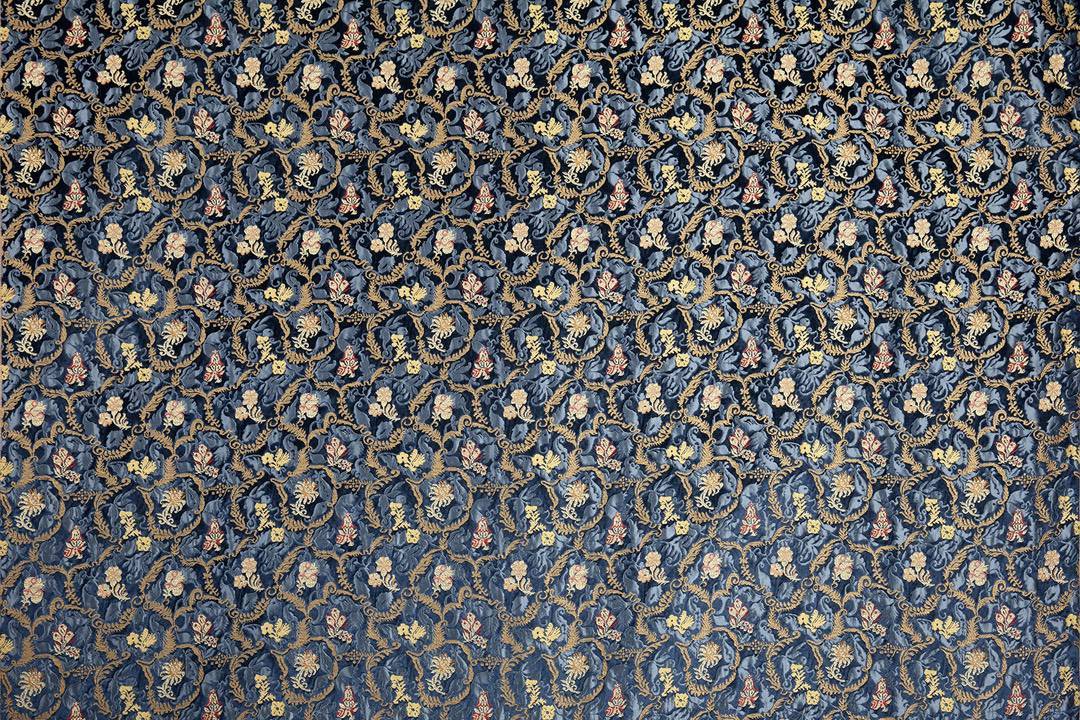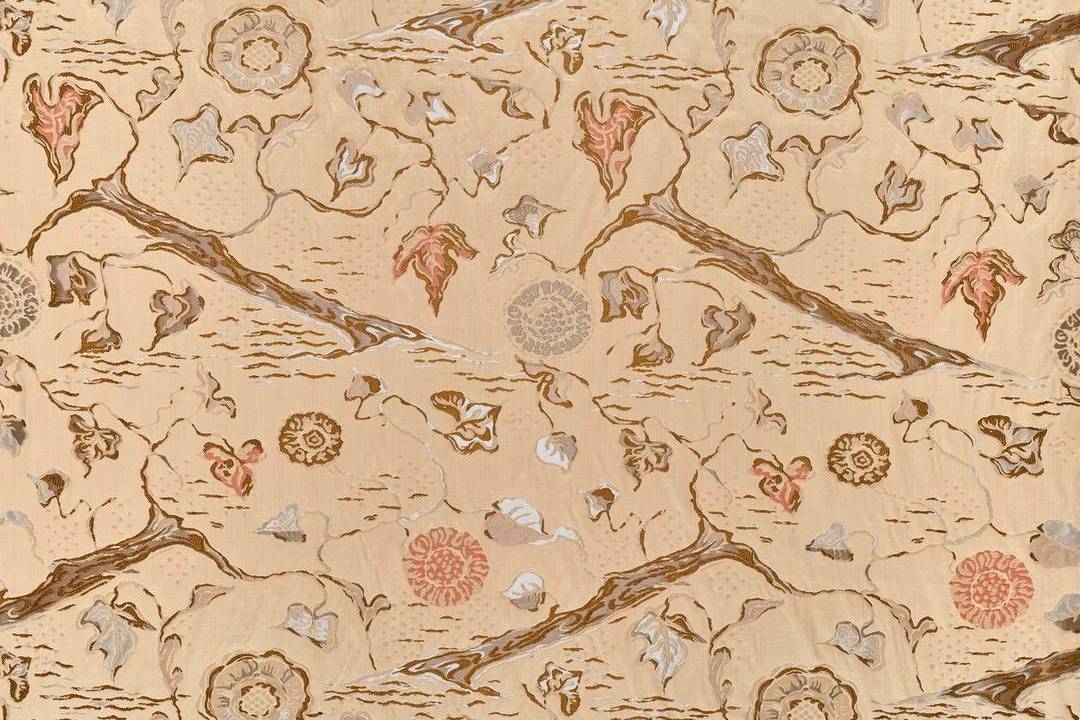When talking about Art Nouveau fabrics, we refer to those beautiful floral and ornamental motifs typical of this artistic movement. In this article, we will discover the characteristics, history, and collection of Luigi Bevilacqua’s Art Nouveau textiles.
Characteristics of Art Nouveau style in the Bevilacqua Fabric Collection
At the turn of the 19th and 20th centuries, contemporary with the Belle Époque, the Art Nouveau style represented one of the first attempts to create a modern aesthetic. It is characterized by dynamic ornamental lines with stylized plant and zoomorphic motifs as protagonists: fruits, amphoras, laurel wreaths, birds, butterflies, and, above all, flowers. The floral element is so predominant that, in Italy, the movement is often referred to as Stile Floreale (Floral Style).
In Art Nouveau, flowers and other natural elements are depicted with sinuous, flowing lines reminiscent of the natural world’s curves. The figures, though stylized and exaggerated in size, convey a sense of preciousness. This simplification is emphasized through the use of two-dimensional forms, often without shading, defined by clear contours.
An example is the Art Nouveau soprarizzo velvet, where the elegant floral motif of irises framed by long, slender leaves, enriches one of the most exclusive fabrics in our collection, still still handcrafted today on historic 18th-century looms.
Art Nouveau Soprarizzo Velvet
Straight lines often end in graceful, elegant curves, known as “whiplash” curves. The predominant colors are often white or peacock blue, as well as soft, natural hues such as lilac, brown, mustard, olive green, and sage green. An example of these color combinations is the refined Tulipani silk lampas, available in various shades including coral, jade, antique yellow, almond, and green.
Tulipani Lampas
Among our Art Nouveau fabrics, the multicolored Fresie velvet is particularly remarkable. It features a symphony of floral elements intertwined with gracefully curved stems, creating a harmonious and elegant composition.
Fresie Multicolored Velvet
Thin, graceful lines also characterize the lattice of stems framing the small oak leaves and berries of the exclusive Casa Bianca cut velvet. This handcrafted fabric takes its name from the White House, where it was introduced in the 1950s.
Casa Bianca Cut Velvet
The Svezia silk lampas features an elegant floral motif with strong Art Nouveau influences, richly decorative and dominated by graceful curved lines of stems, flowers, and small leaves.
Svezia Lampas
An iconic piece in our Art Nouveau fabric collection is the Three Crowns silk lampas, designed by Swedish artist Maja Sjöström (1868-1961). Originally created by our weaving factory for Stockholm City Hall, this exquisite fabric highlights the artist’s refined and personal interpretation of Art Nouveau, expressed through the lightness of the floral elements and the pursuit of modern stylization.
Three Crowns Lampas
History and Characteristics of Art Nouveau
Starting from the second half of the 19th century, the Industrial Revolution and mass production led to the standardization of objects, often perceived as lacking in aesthetic quality. In response to this homogenization, around 1880, artistic and philosophical movements emerged across Europe, seeking to rediscover the value of art and craftsmanship, inspired by the principles of the Arts and Crafts movement.
These movements promoted a return to nature, admired for its formal perfection and dynamism. Strong influences also came from Japanese Ukiyo-e prints, characterized by natural motifs and refined stylizations.
This new decorative language was applied to all forms of art: from architecture to interior design, from glass, ceramic, and metalwork to the graphic design of books, newspapers, posters, and even textile ornamentation.
The term Art Nouveau was first used in Belgium, but it was with the 1900 Paris Exposition that this style spread across Europe and beyond. It took on different names depending on the country: Jugendstil in Germany, Secessionsstil in Austria, Modernismo in Spain, and, in Italy, Stile Floreale or Stile Liberty.
The name Liberty comes from Arthur Lasenby Liberty, the founder of Liberty & Co. in London, a department store specializing in imported furnishings and fabrics from the Far East. Around 1890, Liberty began collaborating with British designers associated with Art Nouveau, whose patterns had a profound influence on decorative textiles. In Italy, the fabrics sold by Liberty & Co. became so popular that the store’s name became synonymous with the style.
With its flowing floral motifs and intricate ornamental designs, Art Nouveau continues to inspire the creation of extraordinary decorative fabrics, such as those in the Bevilacqua collection. These Art Nouveau fabrics celebrate the beauty of nature and the artisanal tradition that makes them truly unique.
Cover Photo: Fresie Multicolored Velvet - Brown Pink Light Blue Ivory Ground
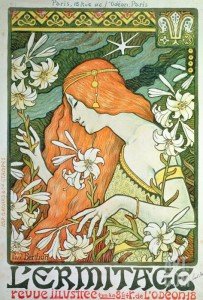
An Art-Nouveau
Advertising Poster

